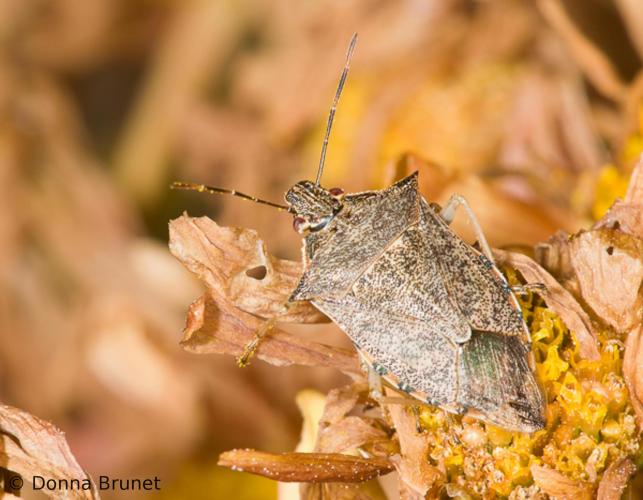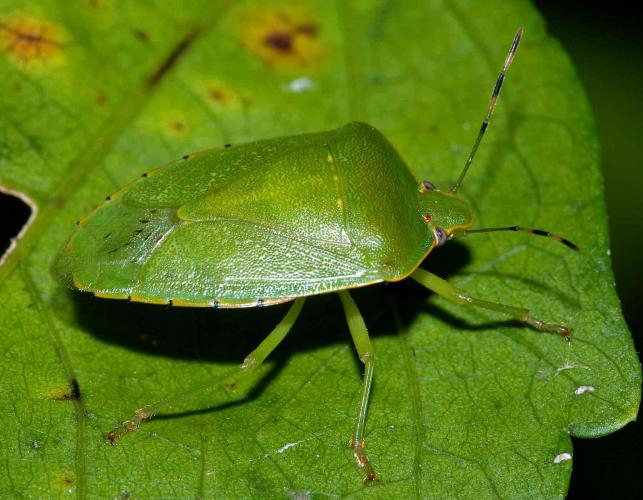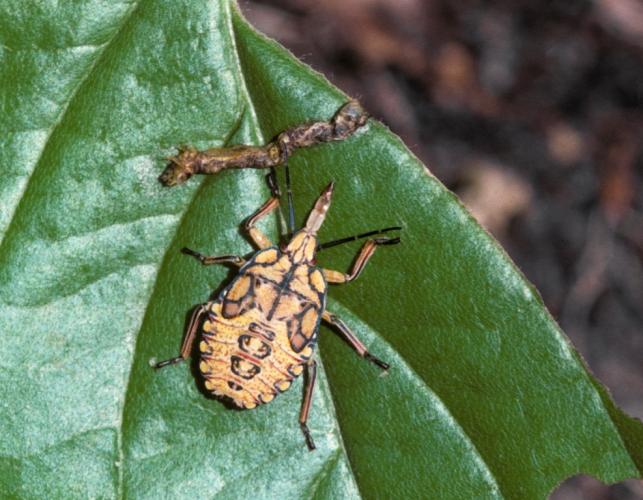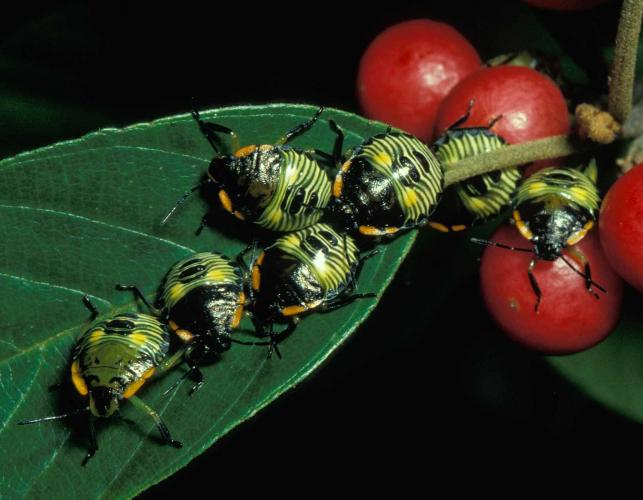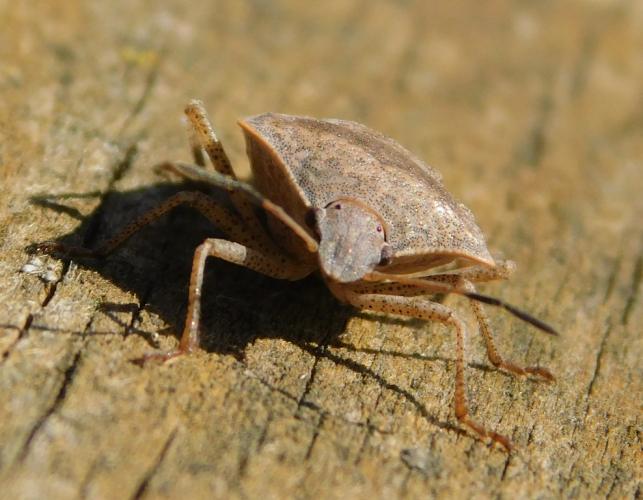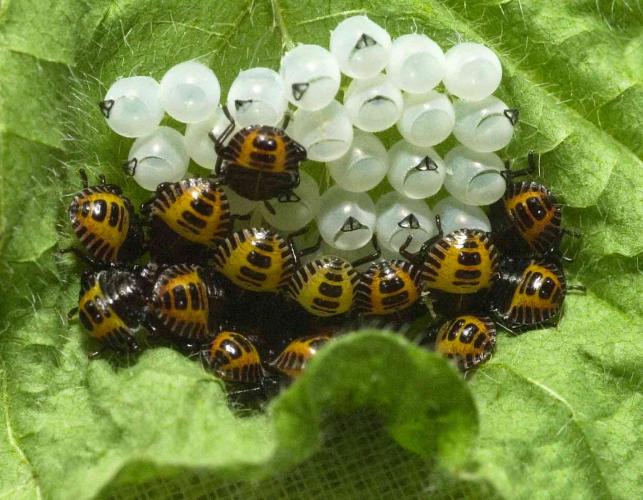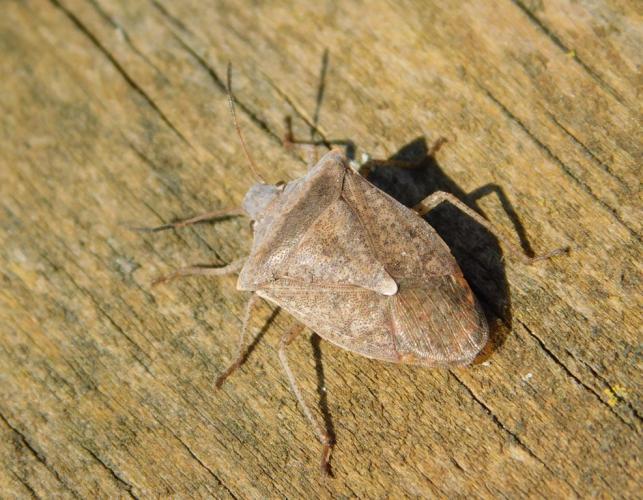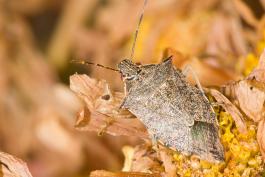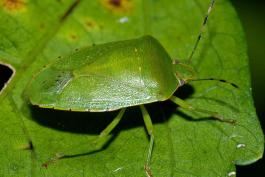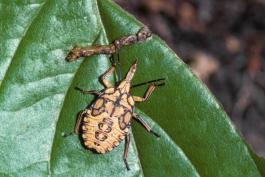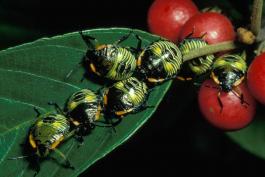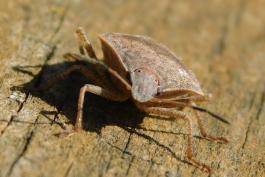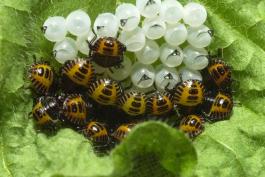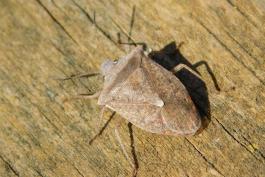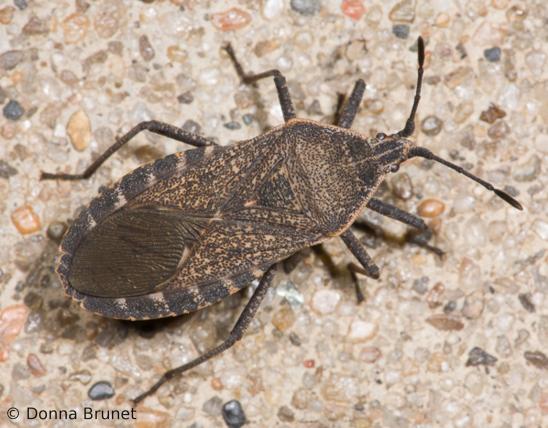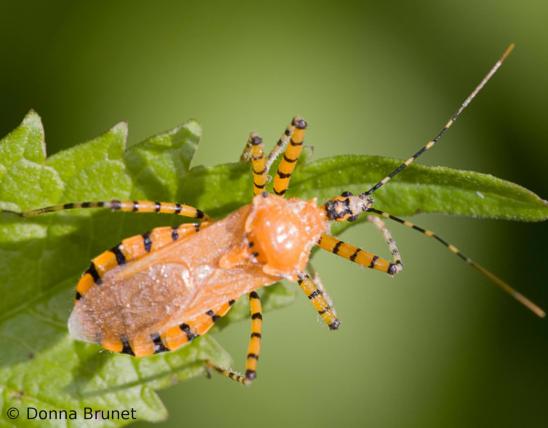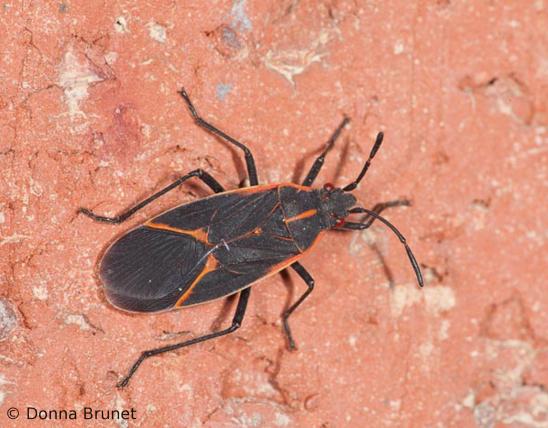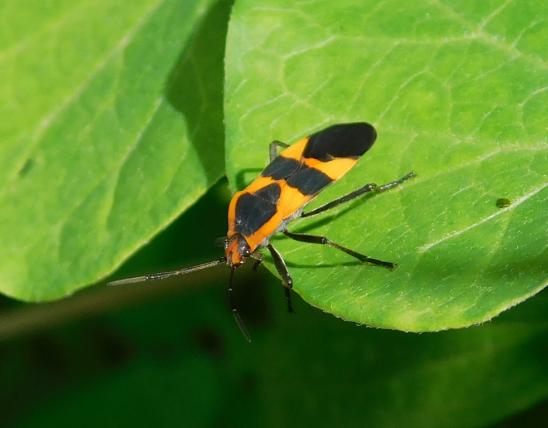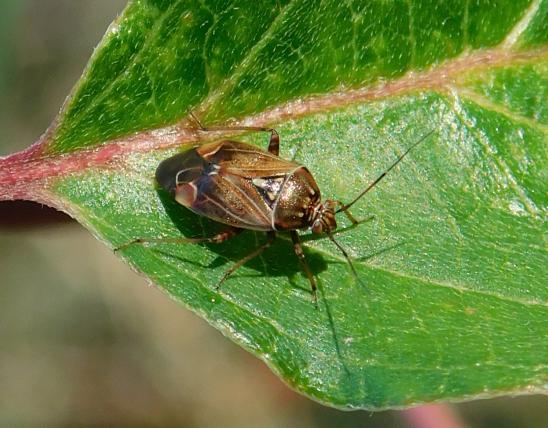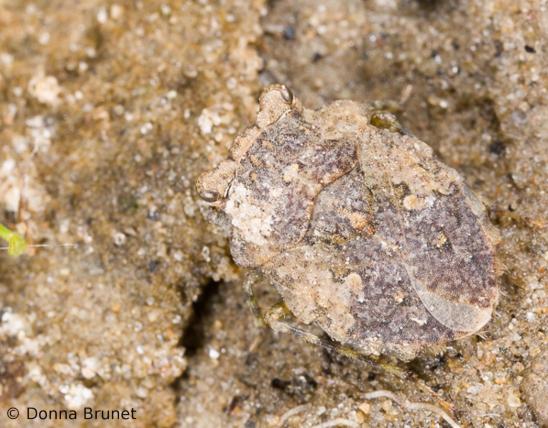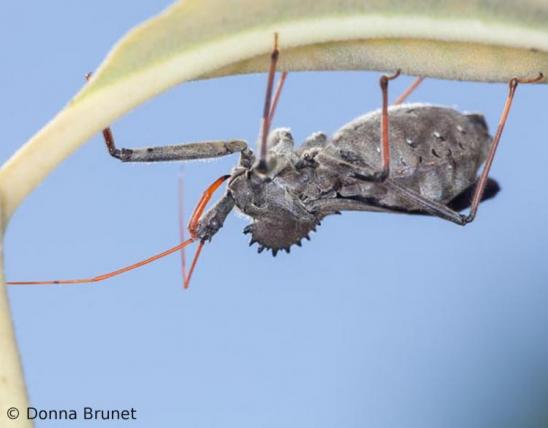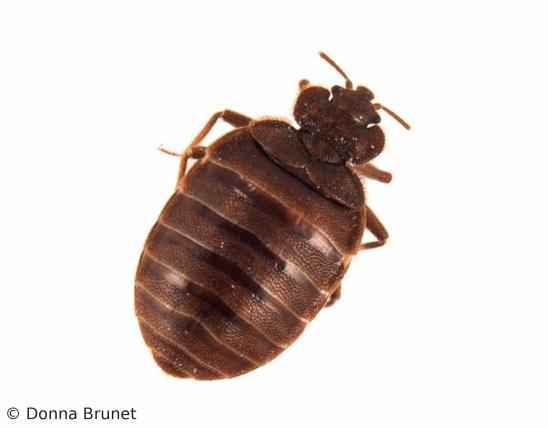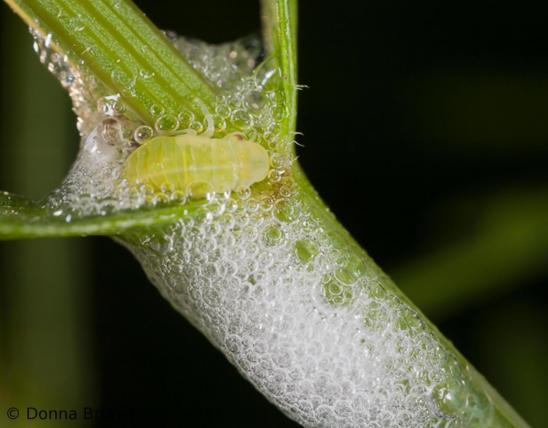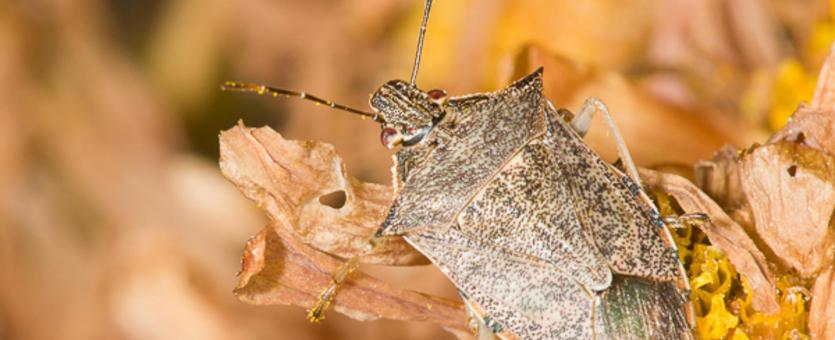
Like most true bugs, stinkbugs (in family Pentatomidae) have membranous wings that fold flat along the back when at rest (often creating an X pattern on the back), and mouthparts joined into a strawlike structure used for piercing and sucking. Members of the stink bug family are generally oval or shield-shaped. The head is rather small. The antennae have 5 segments. The pronotum (shoulderlike section between head and wings) is generally large, and the scutellum (triangular section at the base of the folded wings, pointing away from the head) is also quite large. Coloration, patterning, and shape varies with species. Some are drab brown, gray, or tan, others leaf green, and others bright red or orange with contrasting black patterns.
Length: to about ¾ inch (varies with species).

Statewide.
Habitat and Conservation
As with many plant-feeding insects, these bugs are usually found on or near their food plants. Many stink bugs are generalists and thus not limited to one type of plant. Most stink bugs can fly well, so they can be found nearly anywhere, including inside homes. They are often attracted to lights at night. When harassed or crushed, most stink bugs emit a foul odor that is a defense against predation.
Food
Like many other true bugs (such as cicadas, aphids, squash bugs, and leafhoppers), stink bugs have strawlike mouthparts adapted for sucking nutrients. Most feed on plants, and some are crop pests. A few prey on other insects.
Status
Common.
Life Cycle
Adults overwinter in sheltered places. In spring they mate, and the females lay rows of closely spaced, barrel-shaped eggs on the undersides of leaves. Hatchlings tend to stay near the plants they hatched on. They grow and molt through various immature stages (nymphs). They emerge from their final molt as winged, sexually mature adults. Stink bugs that are full adults by late fall overwinter.
Human Connections
Some stink bugs are crop and garden pests. In late fall when they are seeking shelter, overwintering stink bugs sometimes enter homes, to the dismay of the human occupants.
Ecosystem Connections
Stink bugs take plant nutrients into their bodies and are then eaten by other animals. Keep this in mind if you are considering insecticides, for birds and other insect-eaters can be harmed indirectly by consuming poisoned insects. Various parasitic flies and other insects also feed on stink bugs.
Opossums aren’t the only animals that play possum. The proper term for “playing dead” is thanatosis, and several insects use this defense strategy, including stink bugs. For predators that key in on prey by detecting movement, this can save the insect's life, especially when it comes to predators undeterred by a foul odor.
